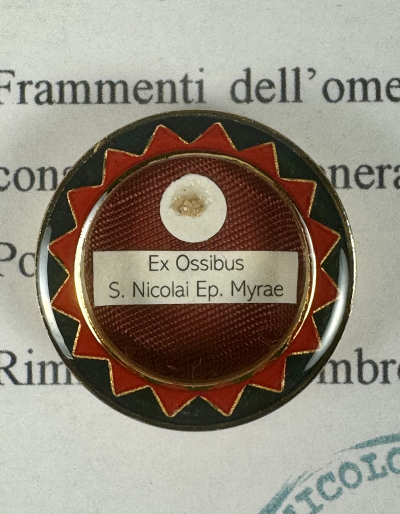Saint Nicholas († ca. 345) was buried in a church in Myra (modern-day Turkey) and his tomb by the Middle Ages already became a popular place of Christian pilgrimage. In May of 1087, under the pretext of preserving them from the Muslim Turks who occupied Myra, relics of the Saint were stolen by Italian merchants from the place of his burial and transported to Italy where they are still kept in a crypt of a specially built Basilica of St. Nicholas in Bari. According to legend, when Italian merchants opened the sarcophagus, a spicy smell of myrrh spread from the relics of Saint. Merchants from Bari managed to take only some of the relics of the Saint, leaving many smaller fragments in the grave. These fragments were collected by Venetian sailors during the First Crusade (1096-1099) and taken to Venice, where they were kept in the church of St. Nicholas. Modern scientific research in Bari and Venice proved that fragments in two cities belonged to the same skeleton. A small part of the relics is still kept in Turkey in Church of St. Nicholas.
In 1087, the relics of Saint Nicholas were taken from the church of Saint Nicholas in Myra (now Turkey ) and taken to Bari. In the summer of 1177, part of them, precisely the left humerus which was missing from the remains of the saint, were stolen by a German bishop named Gulto. The sailing ship that was supposed to bring the bishop and the relic back to Germany stopped in Rimini but never managed to leave. Considering it a divine sign, the bishop confessed the theft and deposited the relic in the church of San Lorenzo, located outside the city walls, in the port area, and frequented mainly by sailors. After this event, considered miraculous, the name of the church was changed to San Nicolò, and the relic remains in the church to the present day, housed in a specially built chapel and available for veneration by the faithful.









 Поменять язык на русский
Поменять язык на русский 